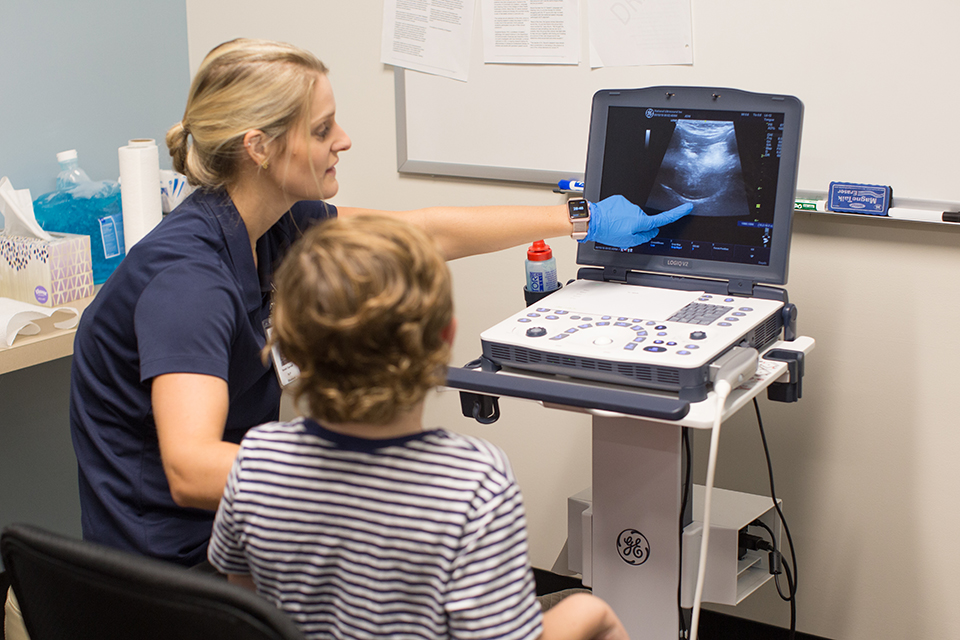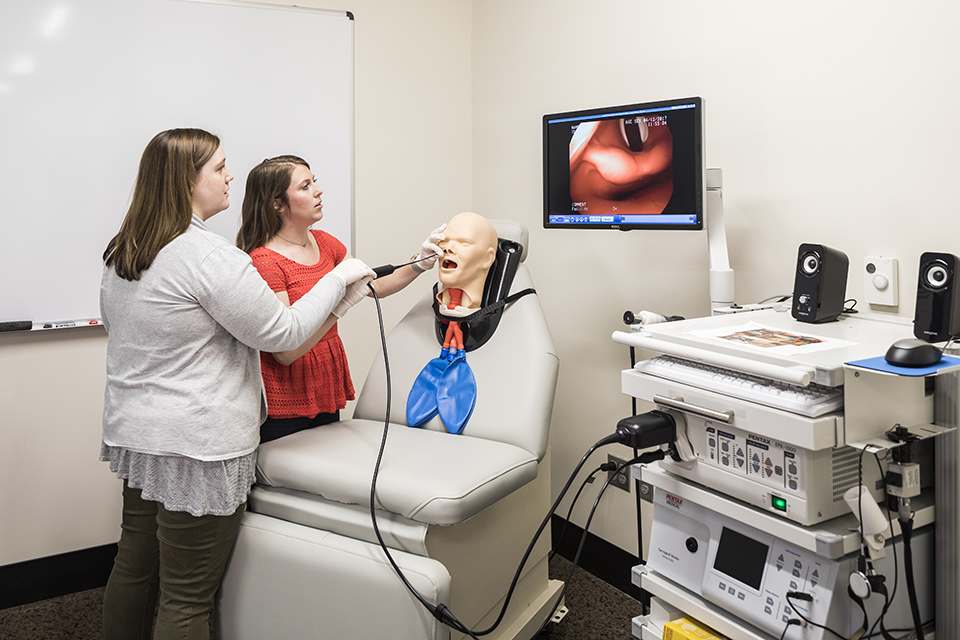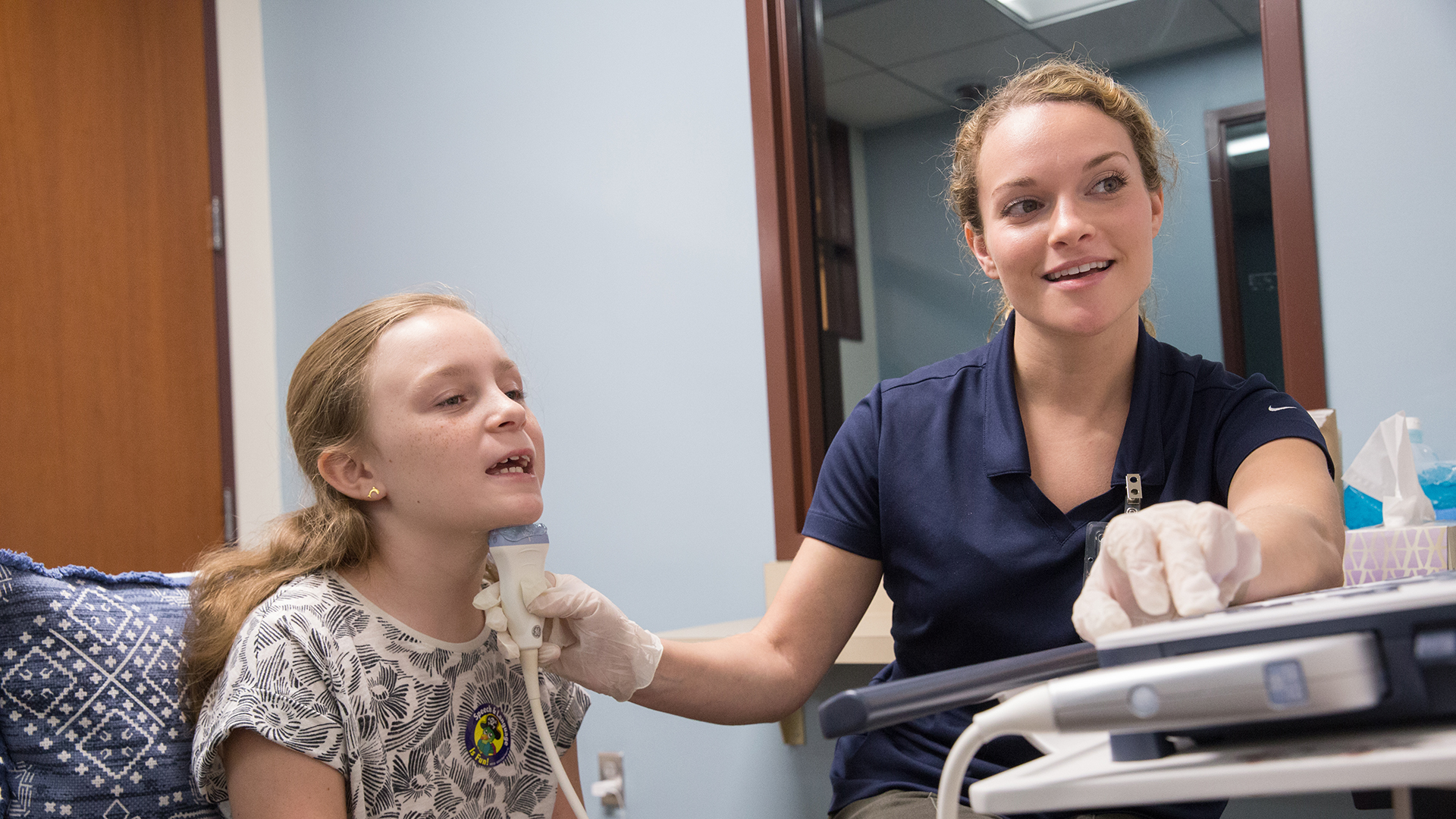During the Department of Communication Sciences and Disorders’ annual Pirate Camp, students in the school’s Master of Science in speech language pathology program work with children who struggle to pronounce the r sound (/r/) in their speech.
“It’s difficult to teach a child how to say /r/ because it’s not something we can show him with our lips. It’s more about the placement of the tongue,” said Margaret Johnson, professor and chair of the Department of Communication Sciences and Disorders. “You can say to a child, move your tongue up and back, but it’s just too vague. He needs to visualize what you are talking about.”
This is where ultrasound technology plays a fascinating role. By placing the transducer under the child’s chin, he can see for himself the placement and shape his tongue needs to make in order to produce the sound. At camp, Samford graduate students help make this experience fun for the kids, challenging them to match the shape of their ultrasound and celebrating with them when they do.
“It can be a whirlwind experience,” Johnson said. “I’ve watched parents sit in our observation room and cry as their child says /r/ for the first time—after working with our student for just two or more days.”

This is the power that technology and equipment can have in therapy, but for Johnson, there is also a greater purpose. The use of technology moves speech language pathology into the 21st century, expanding the scope of speech-language pathologists and the services they provide to their patients.
The amount of equipment found in the Department of Communication Sciences and Disorders’ classrooms and labs is impressive. Along with ultrasound equipment, students gain experience with tools like fiberoptic endoscopic evaluation of swallowing (FEES) and alternative and augmentative communication devices (AACs).
While these specific technologies are supported by varying levels of evidence, Johnson hopes that by training students to seek out the research and be curious enough to try something for themselves, they will develop a critical mind that motivates them to find the best options available for their patients and, ultimately, become the patients’ greatest advocate.
“I want our students to question ideas, concepts and data. Because of how young the speech language pathology profession is and the lack of scientific data available in some areas compared to other fields of therapy, I want our students to be curious enough and bold enough to try different things. There will be millions of behaviors that they will see and wonder, ‘What if?’ I say to them, don’t be scared to try therapeutic ideas to improve the patient’s outcome.”

While this technology and equipment is primarily used at the graduate level, undergraduate students in the school’s communication sciences and disorders major are taught a basic overview, so these tools for treatment will be familiar when they seek their graduate degree. “With our undergraduate major, we introduce students to the field, the spectrum of patients we work with and the disorders that happen across the lifespan,” Johnson said. “But they are not yet eligible to step into a clinical role; they must pursue an advanced degree first."
A Clinic for the Community
The Department of Communication Sciences and Disorders recently opened an audiology clinic in Samford's College of Health Sciences that will provide services to the community under the supervision and guidance of clinical faculty.

